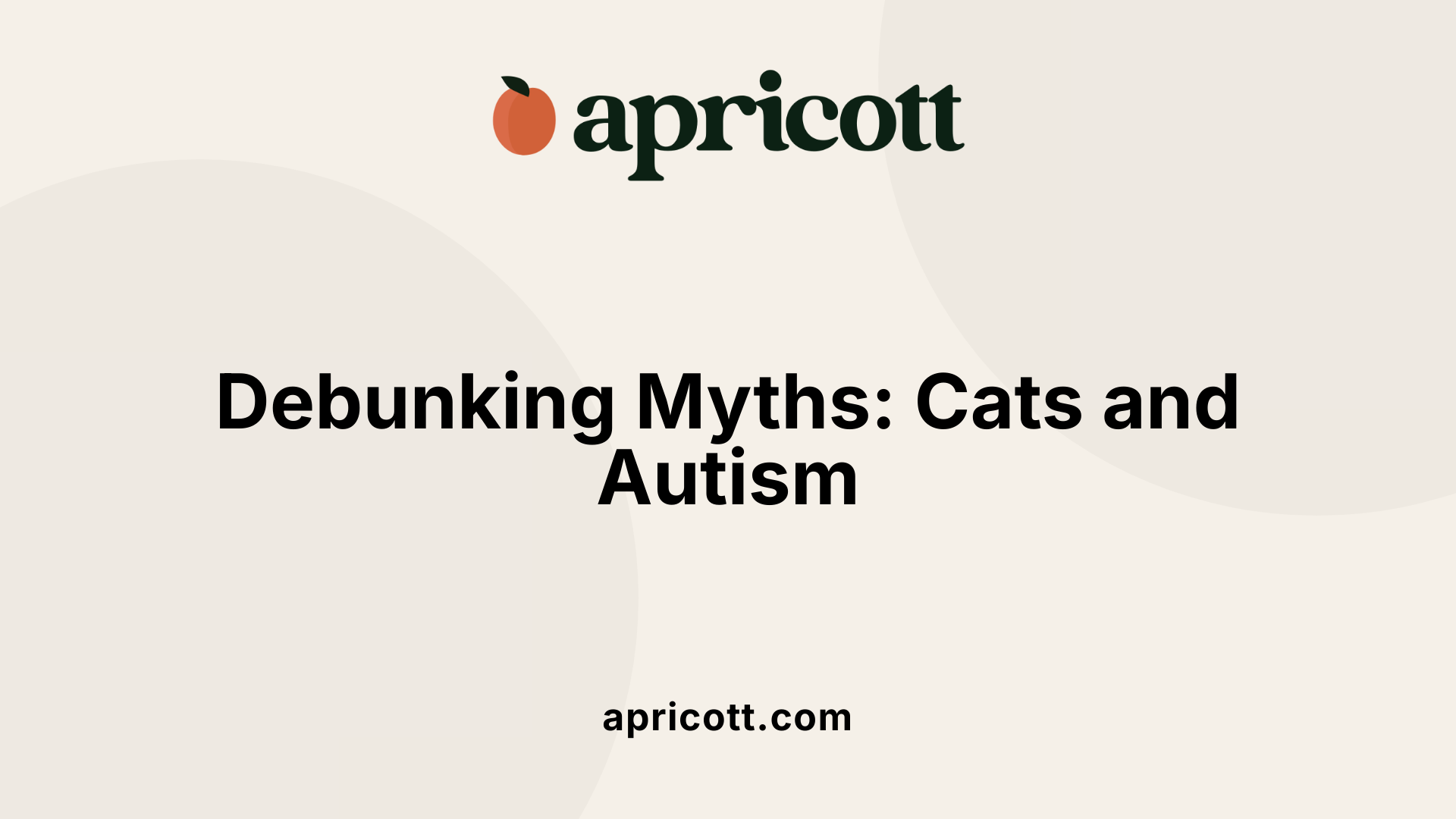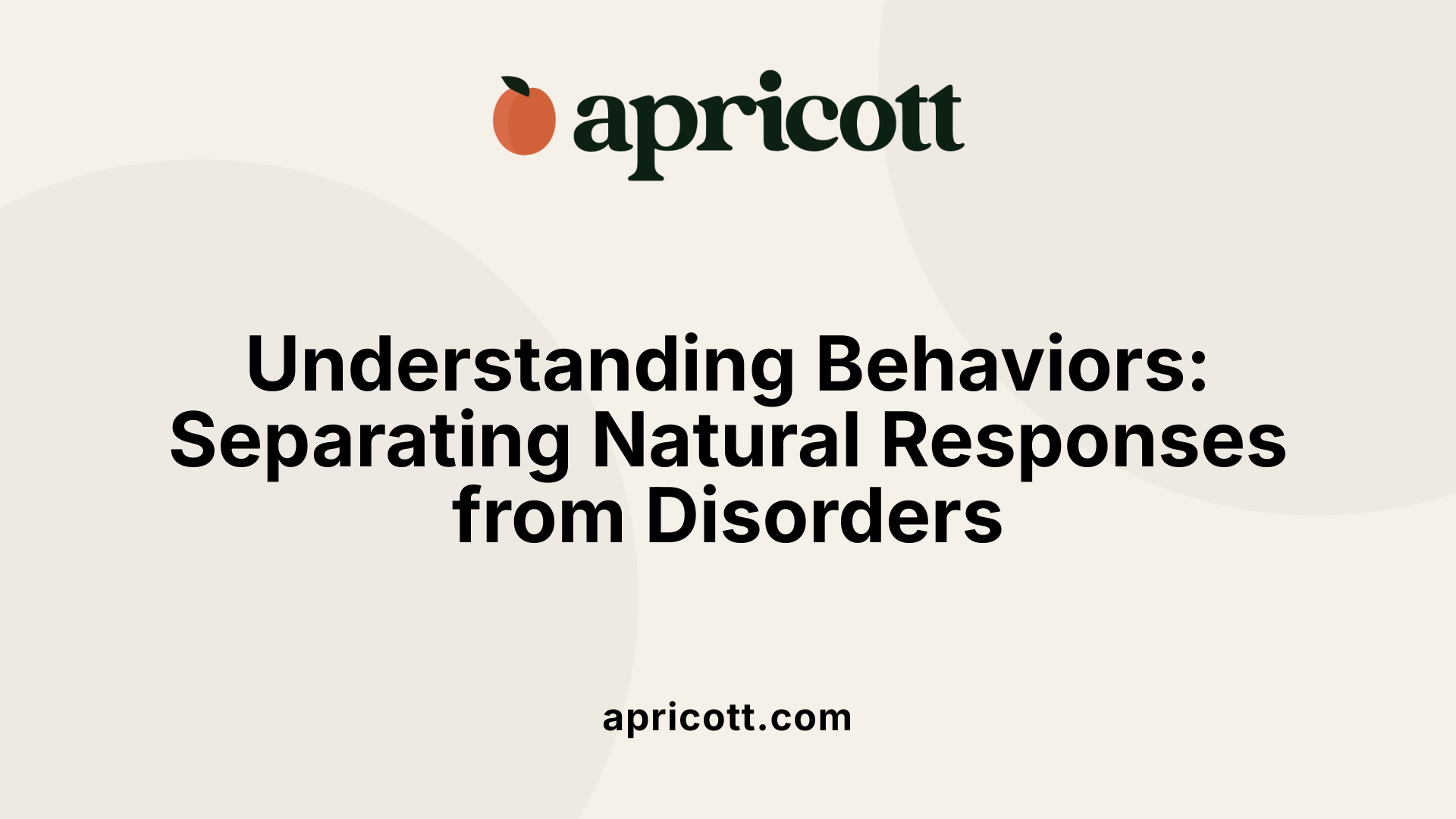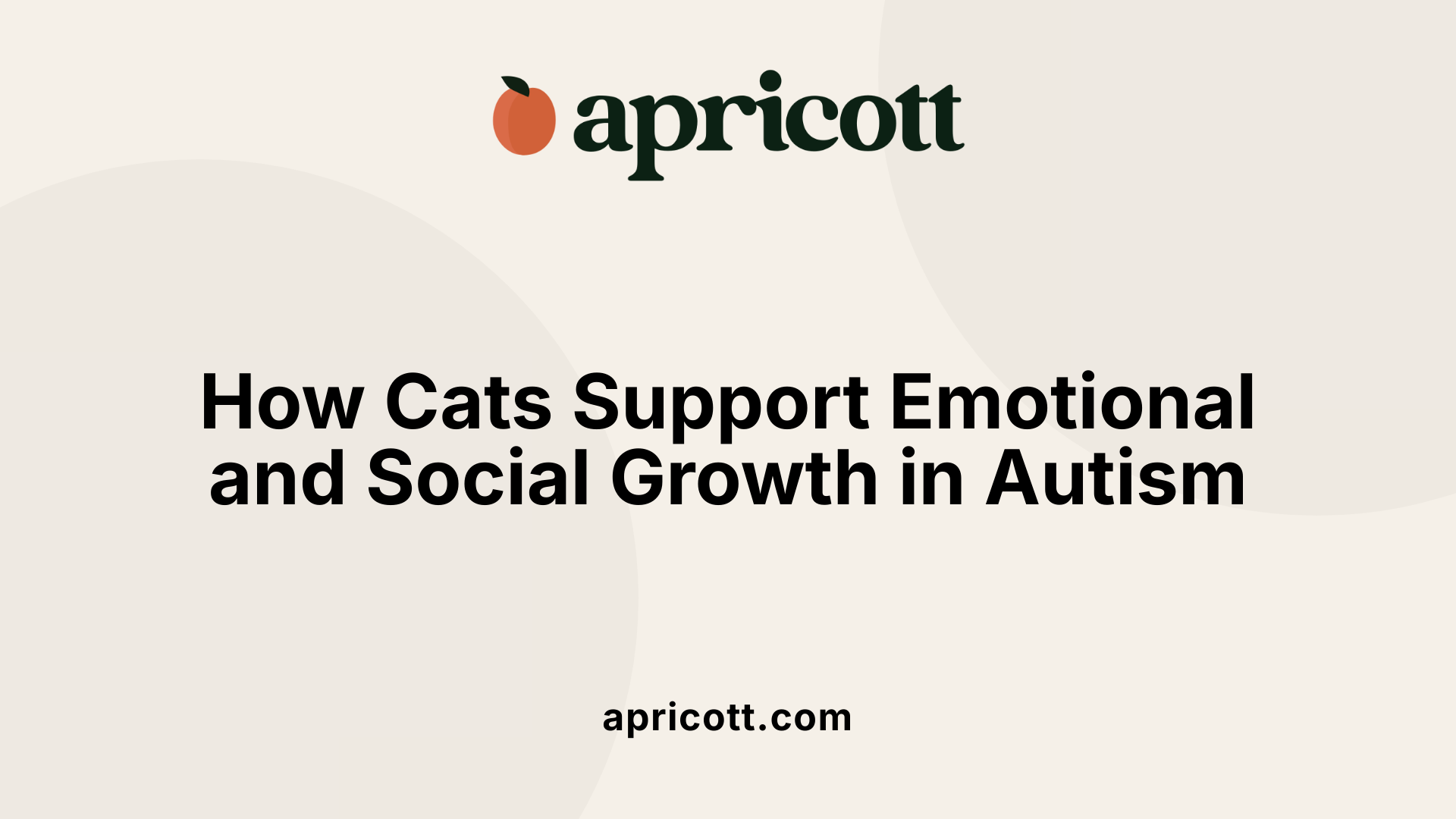June 12, 2025
Exploring the Myth and Reality of Autism in Cats
The question 'Can Cats have autism?' often arises among pet lovers and those interested in animal behavior. While the idea is intriguing, scientific evidence and behavioral observations suggest that cats do not experience autism as humans do. This article explores the differences between human autism and feline behaviors, the misconceptions surrounding this topic, and how cats can positively influence those with autism, providing clarity and fostering better understanding.

Many people wonder if cats can have autism like humans. While some behaviors in cats might appear similar to autism traits, these are usually misinterpretations. Most often, behaviors such as repetitive movements or social withdrawal stem from health issues, stress, or breed-specific characteristics, not a true diagnosis of autism.
Research and observations support that cats living alongside children with ASD often form strong, affectionate bonds and provide calming, therapeutic benefits. These cats display normal feline behaviors, including affection and social interaction, without increased aggression.
Therefore, the idea that cats can have autism is a misconception. Behaviors that resemble human autism are typically feline responses to their environment or health conditions. It's essential to distinguish between actual medical issues and normal feline traits, and always consult a veterinarian if concerns arise.
Human autism is a complex neurodevelopmental disorder affecting how individuals interact socially, communicate, and display repetitive behaviors. It's characterized by neurological differences that influence emotional processing, sensory sensitivities, and social interactions.
In contrast, feline behaviors are driven by instinct, environment, health, and learned habits. Cats do not experience neurodevelopmental disorders like autism. Although some behaviors look similar—such as social withdrawal, repetitive actions, or sensory sensitivities—they are normal feline responses or reactions to their surroundings.
Interestingly, adopting shelter cats has shown benefits for children with ASD. These animals help improve empathy, reduce problem behaviors, and lessen separation anxiety, highlighting the positive role cats can play without implying they experience autism.
Research indicates that behaviors in cats resembling autism traits are largely influenced by environmental and social factors. For example, cats in homes with children diagnosed with ASD often display calming behaviors, affection, and protective instincts.
The temperament and socialization of cats are crucial. Cats adopted as kittens and screened for a calm disposition tend to interact better with children with ASD. Studies from institutions like the University of Missouri reveal that shelter cats' adoption correlates with decreased problem behaviors and improved emotional regulation among children with ASD.
These findings suggest that cats' behaviors in these contexts are best explained through their temperament, socialization, and the emotional bonds formed with humans. This understanding reframes these behaviors not as traits of feline autism but as adaptive and responsive behaviors shaped by their environment and relationships.
| Aspect | Explanation | Additional Information |
|---|---|---|
| Repetitive movements | Normal feline grooming or pacing, not indicative of autism | Stress or breed traits |
| Sensory sensitivities | Reaction to loud noises or sudden stimuli | Environmental management can reduce stress |
| Social withdrawal behaviors | Occasional hiding or aloofness, part of feline personalities | Breed-specific traits or health issues |
| Environmental causes | Noise, changes, or illness affecting behavior | Consultation with vet recommended |
| Importance of veterinary evaluation | Critical for diagnosing health-related behavioral changes | Differentiates medical issues from typical behaviors |
In summary, understanding that many feline behaviors are natural or reactive rather than signaling autism helps foster better human-animal relationships. Recognizing and respecting these behaviors fosters a calming environment for both cats and their human companions, especially children with ASD.

Cats do not experience autism as humans do, since autism is a complex developmental and neurological condition specific to people. Still, some feline behaviors can appear remarkably similar to certain traits associated with autism.
Many cats display repetitive behaviors, such as pacing, grooming excessively, or repeatedly pouncing on the same spot. They may also show heightened sensitivities to stimuli—loud noises, strong smells, or sudden movements—that can overwhelm them.
Additionally, some cats prefer routines, showing resistance to changes in their environment or daily schedule, and can become stressed or anxious when their familiar surroundings are disturbed.
While these behaviors may resemble autistic traits, it’s important to understand their underlying causes. Often, such behaviors stem from medical issues, stress, or environmental factors, which is why veterinary assessment is vital.
Relying on human psychological labels for animals can be misleading. Cats do not have autism, but their behaviors can be influenced by health or environmental factors that affect their wellbeing.
In humans, autism spectrum disorder involves a wide range of developmental differences, including communication difficulties, social challenges, and sensory sensitivities. For cats, behaviors like sensitivity to stimuli or preference for routines are not indicative of autism but are normal variations or responses to their environment.
However, some behaviors in cats, such as repetitive movements or seeming to prefer solitude, may parallel certain traits seen in humans with autism. These similarities can help pet owners and caregivers better understand and support cats with particular sensitivities.
Research suggests that behaviors resembling autism can be more common than previously thought, especially in cats that experience stress or medical conditions. Such behaviors include:
| Behavior | Description | Possible Cause |
|---|---|---|
| Repetitive behaviors | Pacing, excessive grooming | Stress, medical issues, boredom |
| Sensitivity to stimuli | Startling from loud noises | Environmental factors, sensory overload |
| Routine dependence | Resistance to changes | Anxiety, environmental stability |
Veterinary professionals recommend observing these behaviors carefully and consulting experts to identify potential medical or environmental triggers.
While cats may display behaviors that appear similar to certain autism traits, they do not have autism. Applying human psychological terms to animals can cause misunderstandings. Instead, recognizing these behaviors as part of a cat’s natural responses or health issues allows for better care and a more nurturing environment.
Recent studies highlight how environmental enrichment, routine, and stress reduction can improve the quality of life for cats exhibiting these behaviors. Providing a calm, predictable environment and engaging in activities that stimulate their senses can help manage these behaviors.
In conclusion, while some behavior patterns in cats resemble qualities associated with autism, they are not the same. Understanding feline behaviors in context enables owners to better accommodate their pets’ needs and promote positive wellbeing.
Many people harbor the belief that cats can have autism similar to humans. While this idea persists, it is primarily a misconception. Animals, including cats, exhibit behaviors that may resemble autism traits—such as repetitive movements or sensitivities to stimuli—but these are usually attributable to health issues, stress, or breed-specific traits rather than an actual neurodevelopmental disorder like autism.
Research and expert insight clarify that cats do not experience autism as humans do. For example, behaviors such as a cat’s preference for routine, repetitive actions, or sensitivity to sensory stimuli are normal feline behaviors. These behaviors may be misinterpreted as signs of autism but often are simply part of a cat's natural instincts or responses to their environment.
Interestingly, many cats living with children diagnosed with ASD are affectionate and form strong emotional bonds. They often provide calming support, increase social interaction and develop a sense of companionship for children on the autism spectrum. Studies support this, showing that interactions with cats are associated with reduced anxiety, sensory overload, and social difficulties.
Thus, while some behaviors may resemble autism traits, they are generally normal feline behaviors. The notion that cats themselves can have autism is a misconception that overlooks the biological and behavioral differences between humans and animals. Recognizing this helps prevent mislabeling animals and encourages appropriate treatment and care.
Human autism is a complex neurodevelopmental disorder characterized by significant difficulties in social communication, repetitive behaviors, and sensory sensitivities. It involves changes in brain development that impact how individuals perceive and interact with the world.
In comparison, cats’ behaviors are driven by evolutionary instincts, health status, environmental factors, and learned habits. Repetitive actions, such as pacing or grooming, are common in cats and are usually responses to boredom, stress, or environmental changes rather than indicative of a disorder. Similarly, a cat’s preference for routine or aversion to loud noises is typical feline behavior rather than a manifestation of a neurological condition.
Recent research indicates that cats can positively influence children with ASD. For example, a 2022 study highlighted that having a pet cat can foster emotional growth, reduce problem behaviors, and help children develop empathy. The presence of a cat can serve as a calming, non-judgmental companion that improves social engagement and emotional regulation.
Although behaviors in both humans and cats can appear superficially similar, their underlying causes are different. Recognizing these distinctions is essential for proper understanding and care. While cats cannot be diagnosed with autism, their behavior can nonetheless significantly support children with ASD by providing comfort and encouraging social skills.
Many behaviors observed in cats are mistakenly interpreted as autism-like traits. For example, repetitive actions such as pacing, excessive grooming, or a preference for solitude are typical feline behaviors that serve various natural purposes.
Certain sensory sensitivities, including aversion to loud sounds or bright lights, are also normal in cats. These traits often reflect a cat's need for a predictable environment and can be managed through environmental enrichment and routine.
Breed-specific traits also influence behavior. For instance, some breeds like Siamese cats are more vocal and social, while others like the Persian are more laid-back and prefer calm surroundings. Recognizing these differences helps dispel myths about abnormal behaviors.
Health issues can sometimes mimic autism-like behaviors in cats. Medical conditions such as pain, neurological problems, or sensory deficits require veterinary diagnosis and treatment. If a cat exhibits unusual or severe behaviors, consulting a veterinarian is essential to rule out health concerns.
Summary Table of Cat Behaviors and Misconceptions
| Behavior | Typical Reason | Misinterpretation | Additional Notes |
|---|---|---|---|
| Repetitive pacing | Boredom or stress | Autism-like repetitive behavior | Usually resolves with enrichment |
| Preference for solitude | Natural cat independence | Social withdrawal similar to autism | Not health-related unless prolonged |
| Sensory sensitivities | Environmental stimuli | Autism symptoms | Manageable through environment modifications |
| Vocalization | Breed traits or need for attention | Autism-related communication issues | Varies among breeds |
| Excessive grooming | Stress, health issues | Self-injury or autism | May indicate medical problems |
| Breed-specific behaviors | Genetics | Misconception of abnormality | Recognize breed traits to understand behavior |
Creating a supportive environment for cats that display sensitivities involves routine, enrichment, and understanding. Offering a predictable daily schedule can help reduce stress. Providing hiding spots, soft bedding, and controlled stimuli helps sensitive cats feel secure.
Additionally, regular veterinary checkups are crucial to identify and treat health issues that may contribute to behavioral concerns. Enrichment activities like toys, scratching posts, and gentle play promote mental stimulation and emotional well-being.
While cats cannot diagnose or sense autism in humans, their behaviors can resonate with certain autism traits. Both pet owners and professionals should remember that behaviors often have natural explanations and should be addressed in consultation with animal health experts.
Understanding the distinctions and similarities helps foster empathy, proper care, and appropriate use of animals in supporting individuals with autism. Cats are wonderful companions that, through their instinctive behaviors, can provide comfort, emotional support, and even aid in social development, but they are not capable of experiencing autism themselves.

Yes, cats can provide meaningful support and benefits for individuals on the autism spectrum. They serve as emotional companions, offering comfort and a calming presence, which can be especially helpful during stressful times or situations that might trigger anxiety, such as the uncertainties of the pandemic.
For children with autism, cats often help improve social skills, empathy, and emotional regulation. Their nonjudgmental nature and routine-based interactions create a safe environment for autistics to develop social confidence.
Therapeutically, cats are involved in activities like play therapy and are sometimes designated as autism assistance animals, enhancing emotional and sensory well-being. The consistent companionship of a cat fosters trust, reduces feelings of loneliness, and promotes overall mental health.
While a cat is not a replacement for professional therapy, their presence acts as a valuable addition, enriching the support system for autistic individuals and contributing positively to their quality of life.

Research has shown that interactions with cats can provide significant emotional and social benefits for autistic individuals. Cats offer a calming presence that can help reduce anxiety and sensory overload, which are common struggles for those on the autism spectrum.
Cats are often very sensitive to their owner’s mood and physiological changes, such as heart rate and blood pressure. This ability to sense and respond to emotional cues can serve as a comforting anchor for children with autism, who may find it challenging to express or manage their emotions independently.
Engagement with cats can stimulate the release of oxytocin, often called the 'love hormone,' which promotes bonding, trust, and empathy. As a result, children often feel more understood and less isolated when they have a pet cat that responds to their emotions.
Interactions with cats can help reduce autism symptoms such as difficulty maintaining eye contact and feeling overwhelmed in crowds, encouraging social behaviors. Cats provide consistent and nonjudgmental companionship, which can boost a child's self-worth and confidence.
Child-initiated play and caregiving routines involving cats foster social skills like sharing, empathy, and understanding others’ emotions. For children with autism, these bonding moments serve as low-pressure opportunities to practice communication and emotional expression.
Cats act as gentle, predictable friends that encourage children to open up, facilitating emotional development and social interaction. These interactions are particularly beneficial because they are often free from the complexities and demands of human conversations.
Spending time with cats nurtures social bonding and emotional awareness in children. Caring for a pet enhances empathy because kids learn to interpret a cat’s body language and needs, which can translate into better understanding of human emotions.
Furthermore, engaging with cats can help children develop and maintain routines, which provides structure and predictability—a vital aspect of managing autism symptoms.
Having a pet cat can serve as a source of comfort and unconditional acceptance, which boosts self-esteem. Children who feel supported by their pet often develop increased confidence in social settings.
The daily routine of caring for a cat encourages responsibility and independence, further reinforcing positive self-perceptions. As children observe their pet's responses, they may feel more motivated and capable of managing their own emotions and social behaviors.
| Benefit | Description | Supporting Evidence |
|---|---|---|
| Emotional regulation | Calming presence reduces anxiety and sensory overload | 2022 studies; hormone release |
| Social skills | Encourages eye contact, speech, and interaction | Observational reports, studies |
| Empathy development | Teaches interpretation of emotional cues | Routine caregiving |
| Confidence boost | Unconditional companionship fosters self-esteem | Testimonials, research |
| Stress reduction | Lowers cortisol levels, promotes relaxation | Scientific analyses |
It’s important to note that cats do not experience autism, nor can they diagnose or sense it. Some behaviors seen in cats, such as repetitive motions or sensitivities to stimuli, might resemble traits associated with autism, but these are often related to medical issues or individual temperament. Veterinary professionals recommend consulting experts if a pet's behavior concerns arise.
While cats can contribute positively to the lives of children on the autism spectrum—by offering comfort, triggering social engagement, and helping regulate emotions—they are not a substitute for professional support. Each autistic individual has a unique experience, and tailored strategies are crucial for effective development and well-being.
In summary, cats hold a meaningful place in fostering emotional and social growth within the autism community. They serve not just as pets, but as companions that help ease the challenges faced daily by many children and adults navigating autism.

Supporting cats with sensitivities and peculiar behaviors begins with creating a calm, predictable environment. Cats that display repetitive movements or sensory sensitivities benefit from routines that minimize sudden changes and loud noises. Providing comfortable hiding spots, soft bedding, and safe spaces allows cats to retreat and reduce stress.
Engagement with enrichment activities, such as toys and climbing structures, can keep cats mentally stimulated while satisfying their natural instincts. Consistent feeding schedules and gentle interaction help foster trust and comfort.
Understanding that each cat is unique emphasizes the importance of observing their behavior and adjusting care accordingly. A stable environment not only benefits the cat’s well-being but also helps reduce behaviors that may be misunderstood as problematic.
Behavioral concerns should always prompt a consultation with veterinary professionals. Some behaviors resembling autistic traits, like repetitive actions or sensitivity to noise, might be linked to underlying medical conditions such as pain, neurological issues, or sensory processing disorders.
Regular check-ups are crucial to ensure that the behaviors are not caused by health problems. Veterinarians can perform examinations, blood tests, and other diagnostics to identify potential medical issues.
If health causes are ruled out, consulting animal behaviorists can help address behavioral concerns. These specialists can recommend tailored strategies that promote calmness and reduce stress-related behaviors.
Professional guidance is vital for responsible pet ownership, especially when managing behaviors that resemble traits associated with autism. Veterinarians provide medical expertise to diagnose and treat health-related issues.
Animal behaviorists, on the other hand, offer insights into behavioral patterns and can develop behavior modification plans. They can help owners implement environmental adjustments and training techniques that promote well-being.
Many behaviors reflecting sensory sensitivities or routines can be managed effectively with expert support. This collaboration ensures the cat receives comprehensive care, addressing both their physical health and emotional needs.
| Aspect | Role | Description |
|---|---|---|
| Creating a safe space | Environment | Provide hiding spots and routine to reduce stress |
| Health monitoring | Veterinary care | Regular check-ups to catch underlying issues |
| Behavioral support | Animal behaviorists | Tailored strategies for managing peculiar behaviors |
Proper care and attentive management foster a trusting relationship between cats and their owners. This responsible approach maximizes the benefits of pet companionship and enhances the quality of life for cats with sensitivities and unique behaviors.
While the idea of cats having autism is a misconception, the behaviors some cats display can resemble autistic traits, often due to health, environment, or breed-specific factors. Recognizing the difference between feline normal behaviors and signs that warrant veterinary attention is vital. Moreover, cats can play a therapeutic role for individuals with autism, providing comfort, emotional support, and opportunities for social skill development. Understanding and responsible pet ownership are key to fostering the well-being of cats and harnessing their potential to support human emotional and social growth. Ultimately, fostering empathy and awareness helps bridge the gap between animal behavior and human needs, enriching lives on both sides.